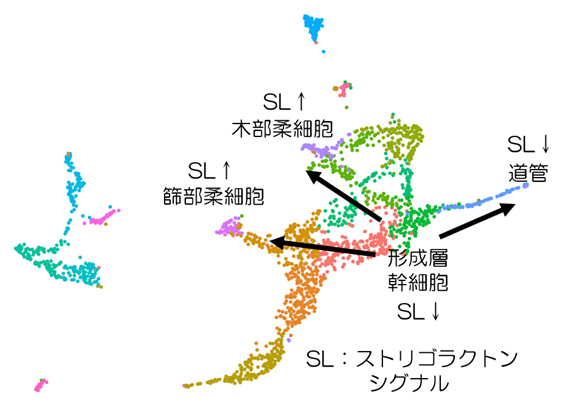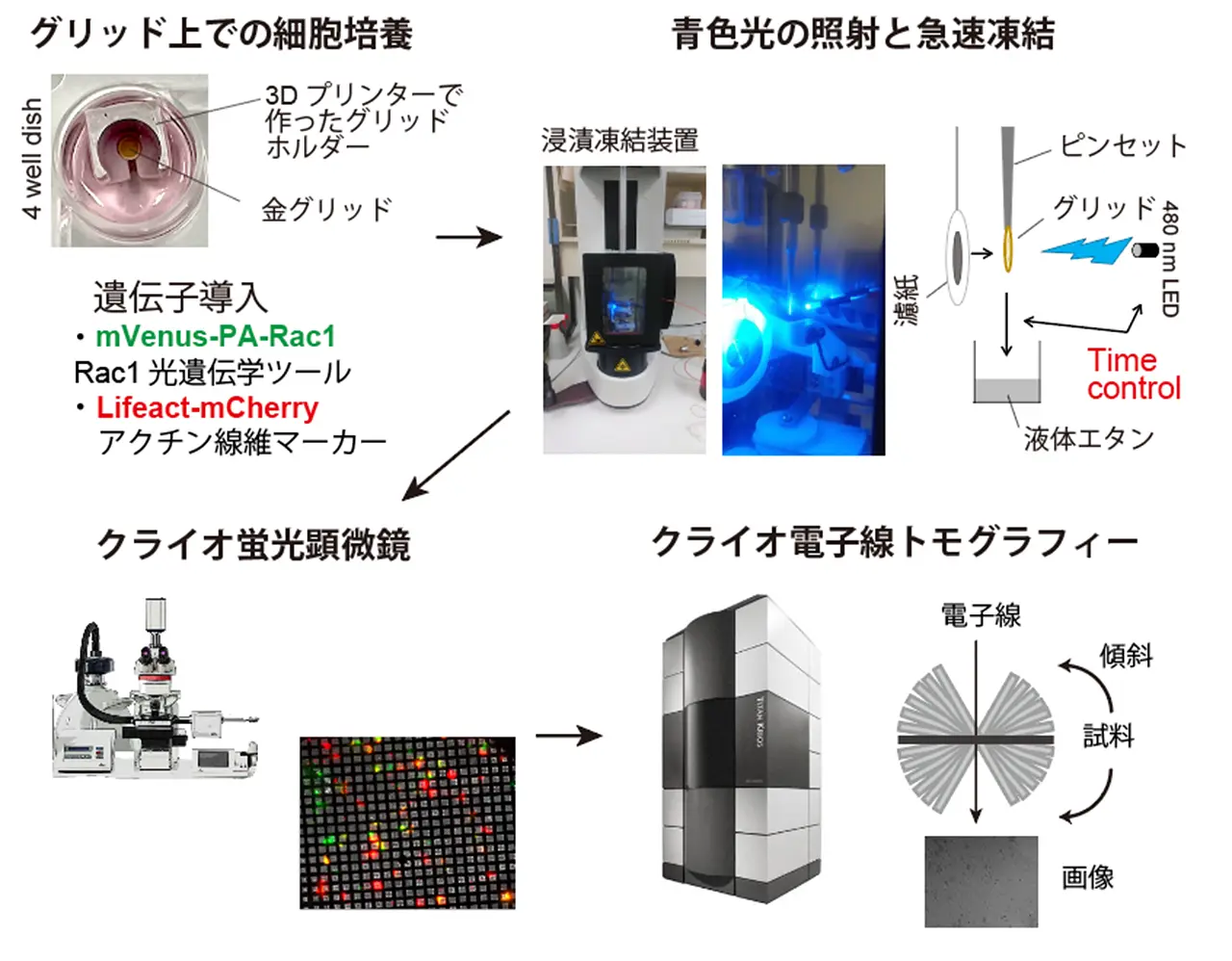2025-04-28 理化学研究所
理化学研究所の石東博氏らの国際共同研究チームは、植物の肥大成長(二次成長)を担う「形成層幹細胞」の遺伝子発現パターンを一細胞レベルで明らかにし、植物ホルモン「ストリゴラクトン」が水の通り道である道管の形成を制御する新たな機能を発見しました。この研究では、モデル植物シロイヌナズナを用いて、核抽出法と一細胞・核解析技術を駆使し、形成層幹細胞の特異的なmRNA構成を特定しました。さらに、ストリゴラクトンのシグナルが道管の形成を調節し、その数が植物の乾燥耐性に影響を与えることを突き止めました。この成果は、乾燥耐性に優れた農作物の開発や、持続可能な農業への貢献が期待されます。研究結果は『Nature Communications』に掲載されました。

図1 一細胞・核解析で明らかになったシロイヌナズナ胚軸の細胞アトラス
<関連情報>
- https://www.riken.jp/press/2025/20250428_1/index.html
- https://www.nature.com/articles/s41467-025-59072-y
ストリゴラクトンは導管形成を調節することで植物の水利用を最適化する Strigolactones optimise plant water usage by modulating vessel formation
Jiao Zhao,Dongbo Shi,Kiara Kaeufer,Changzheng Song,Dominik Both,Anna Lea Thier,Hui Cao,Linus Lassen,Xiaocai Xu,Yuki Hamamura,Laura Luzzietti,Tom Bennett,Kerstin Kaufmann & Thomas Greb
Nature Communications Published:28 April 2025
DOI:https://doi.org/10.1038/s41467-025-59072-y
Abstract
Wood formation is crucial for plant growth, enabling water and nutrient transport through vessel elements, derived from cambium stem cells (CSCs). CSCs produce vascular cell types in a bidirectional manner, but their regulation and cell fate trajectories remain unclear. Here, using single-cell transcriptome analysis in Arabidopsis thaliana, we reveal that the strigolactone (SL) signalling pathway negatively regulates vessel element formation, impacting plant water usage. While SL signalling is generally active in differentiating vascular tissues, it is low in developing vessels and CSCs, where it modulates cell fate decisions and drought response. SL-dependent changes in vessel element formation directly affect transpiration rates via stomata, underscoring the importance of vascular tissue composition in water balance. Our findings demonstrate the role of structural alignment in water-transport tissues under unstable water conditions, offering insights for enhancing drought resistance in plants through long-term modulation of vascular development.


